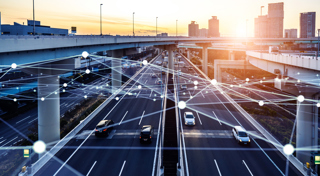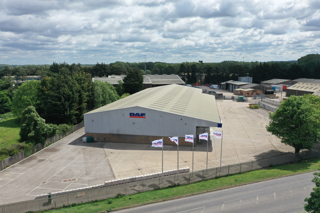Gilson Santiago, CEO of Masternaut and senior VP of fleet management at Michelin
With more than 20% of the EU’s CO2 emissions coming from road transport, as an industry we have a responsibility to reduce our environmental impact.
While this statement is nothing new, the abrupt 8.8% decrease in global emissions witnessed during the first half of 2020 gives us cause to reflect.
With a new benchmark set for what is achievable, how do we as an industry keep our impact down as we gradually get our operations back to normal?
Streamlining ways of working
Unlike other sectors, in the majority of cases not using road transport simply isn’t an option.
What is interesting however, are the levels of inefficiency seen when you take a closer look at how vehicles are utilised.
By optimising assets, fleets can still reduce the overall number of vehicles on the road and their own costs.
We estimate that 10% of vehicles in a fleet are under-used or only partially filled at any one time.
Reorganising trips, and identifying which technician or driver lives the closest to a job, reduces hours spent on the road, and increases efficiency.
Keeping drivers safer and emissions down
It goes without saying that making the mobility of goods and people safer should always be our top priority.
Fortuitously, many of the elements of eco-driving, such as avoiding harsh acceleration and braking, and maintaining the vehicle properly, also feed into better safety.
Changing driving style can easily reduce fuel consumption by between 5-10%, making for greener, safer drivers.
Using data to achieve business goals
While investing in a sound sustainable mobility strategy is a vital part of operating responsibly, the benefits to the business are entirely reciprocal.
From vehicles spending less time off the road due to minor bumps and scrapes, to huge savings on fuel bills, many of the aspects of sustainable mobility naturally boost productivity, too.
Key to achieving sustainable mobility goals then, is understanding what’s happening across the entire fleet.
By capturing data from all vehicles through a connected fleet technology system, then consolidating and analysing it, the fleet manager can understand the impact of the whole business as well as the role of individuals.
As well as supporting better operations, this allows the business to achieve enhanced customer service.
This same data can be channelled to let a shopper know where the delivery man is, or to prove that a package has been delivered on time at the right address.
People powered
Investing in the right technology is only stage one.
Ensuring your team can understand the data and know how to apply the insights is vital, to allow them to make meaningful business decisions and ensure driver safety.
Buy-in at all levels is also essential.
Senior management teams need to be able to see the return on their investment.
Drivers themselves need to trust the initiative and believe it’s in their best interests, rather than spying on them.
And fleet managers need to be empowered to affect actual change from what they learn.
From our position as a fleet management services and solutions expert, we also need to understand how the support we provide fits into the business’ operations.
How the company uses vehicles, for what sort of journeys and what its objectives are.
Setting the right sustainable mobility policy can take time to get right, but the premises are simple and the core pillars fully aligned.
As we look ahead to a time where we return to business as usual, we have a unique opportunity to ensure our new normal reflects the very best ways of working.





















Login to comment
Comments
No comments have been made yet.